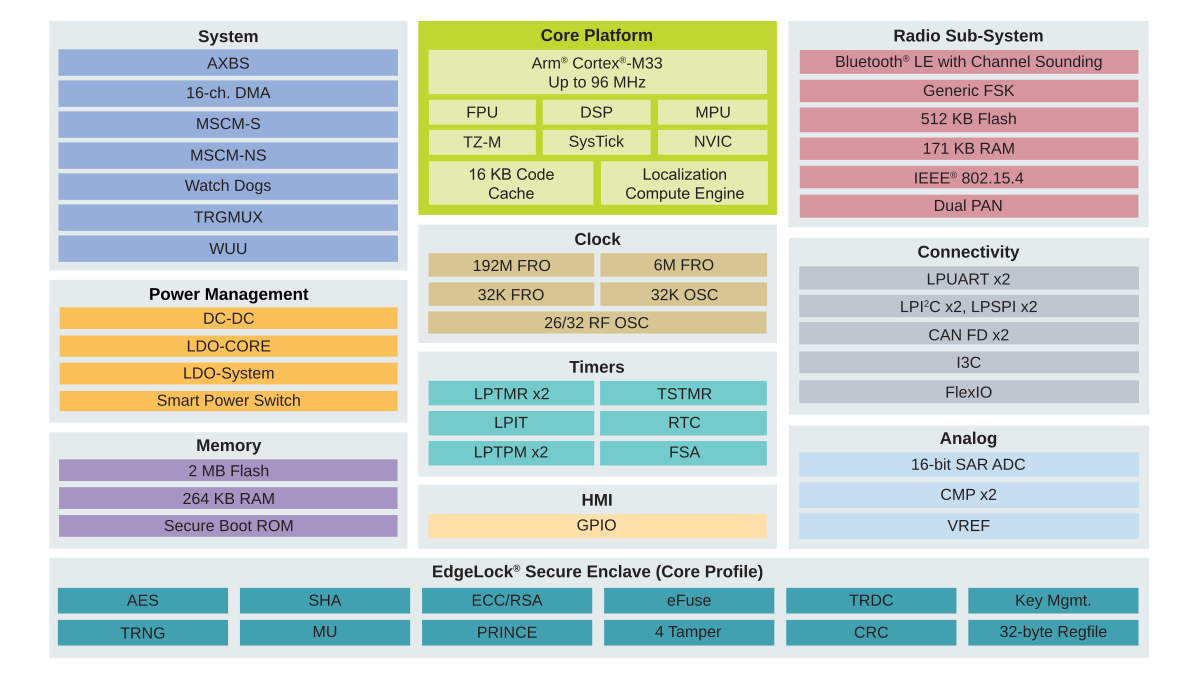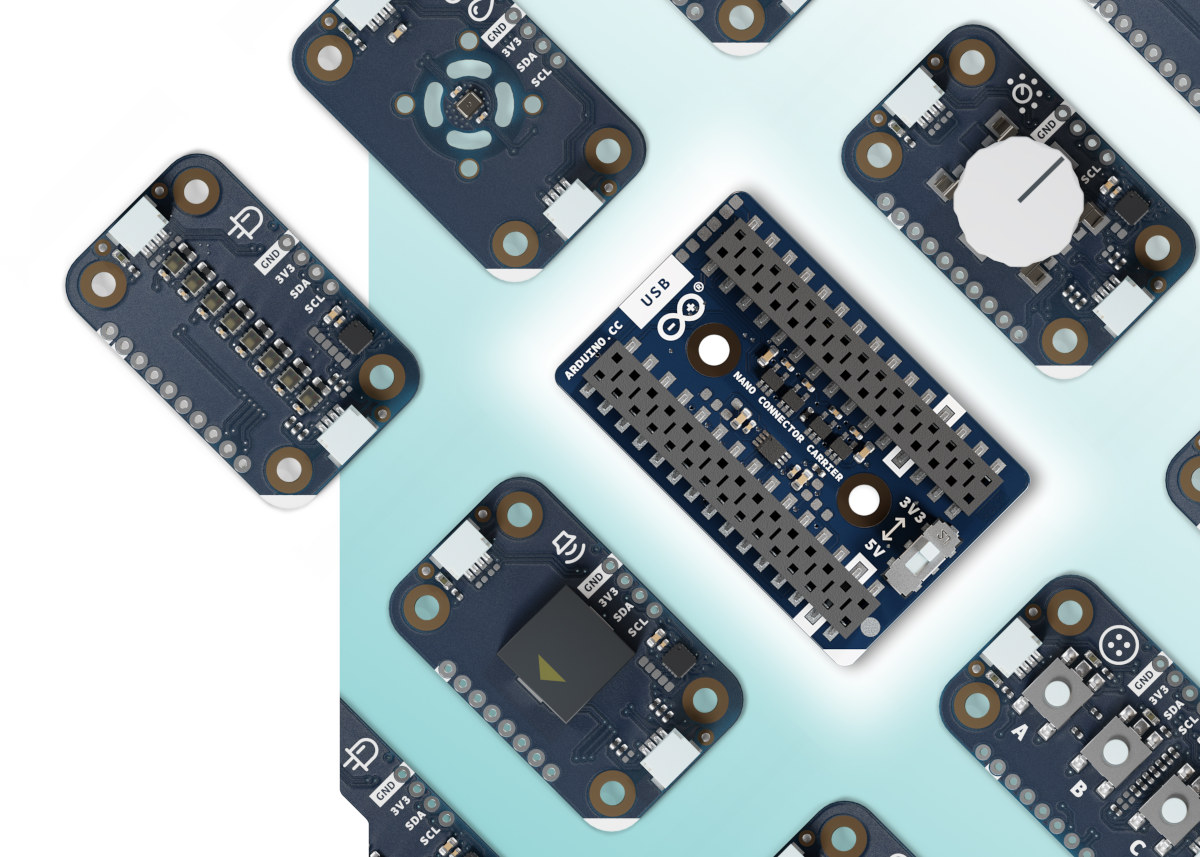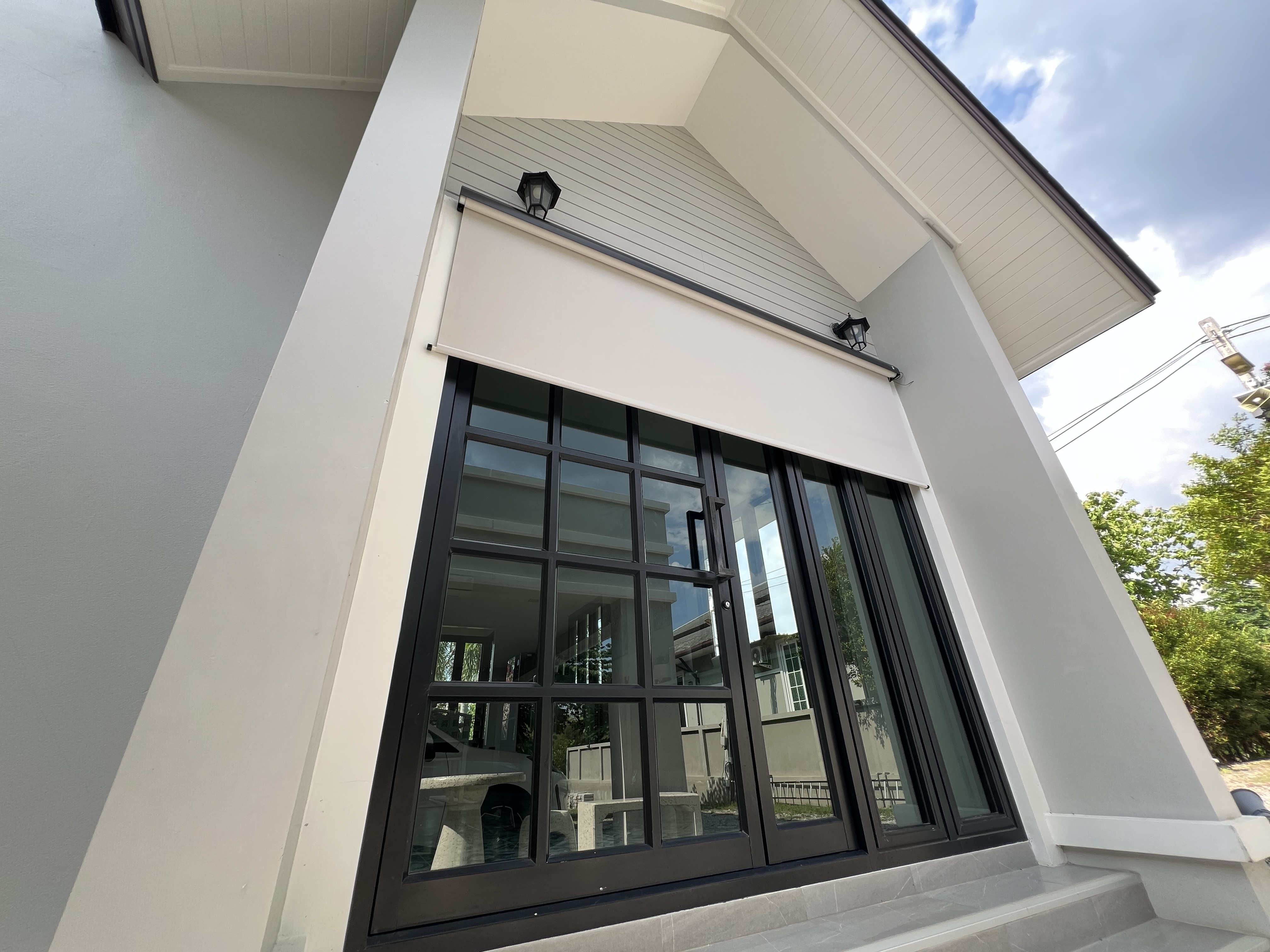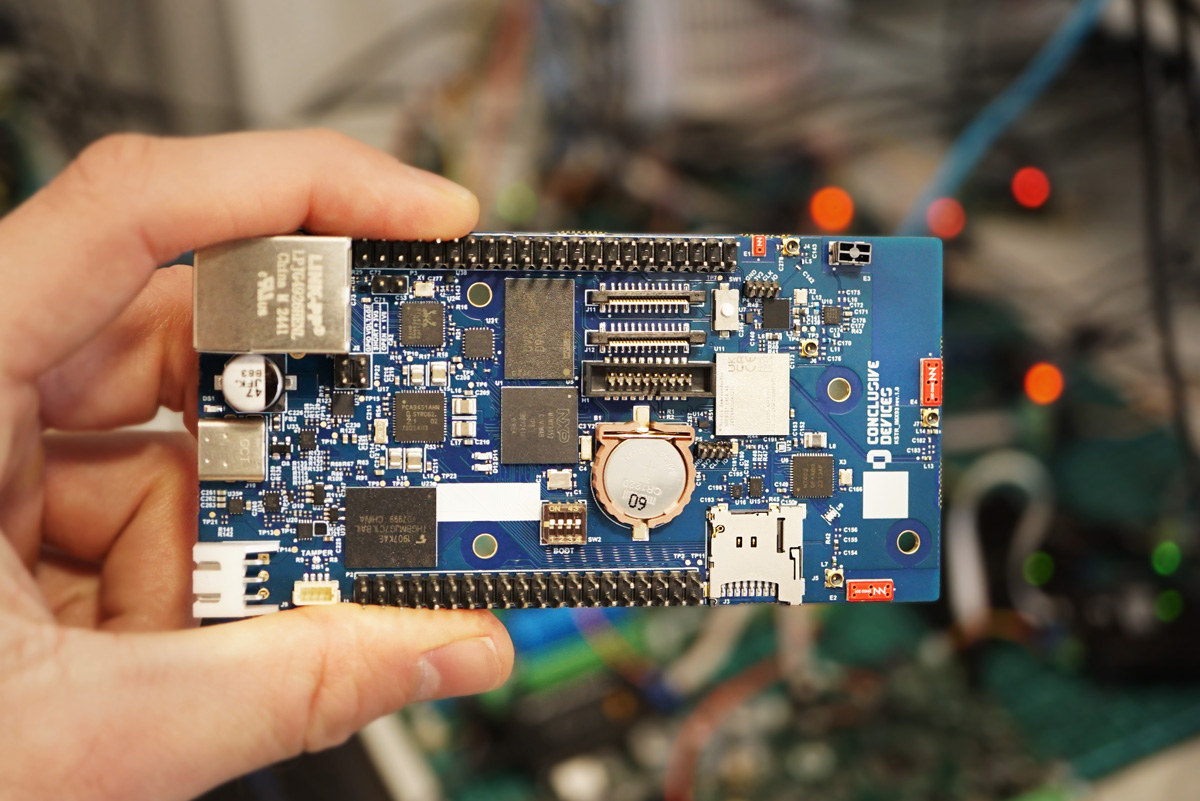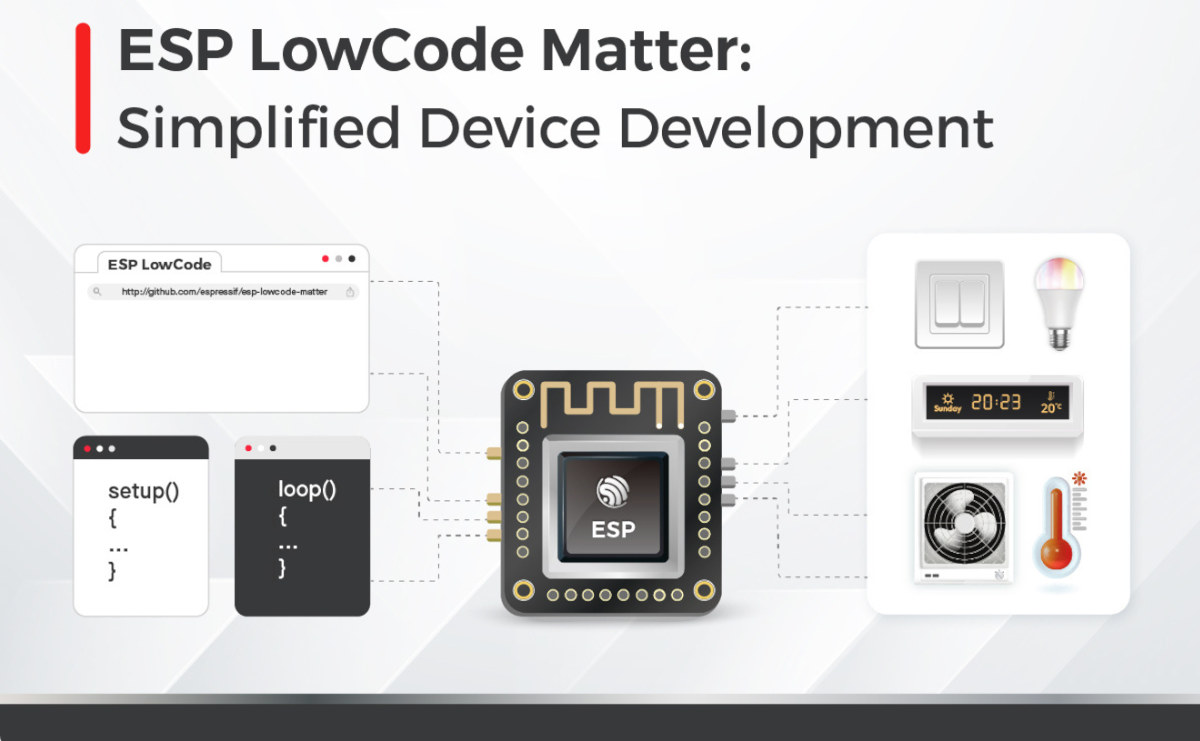Ambiq Apollo330 Plus SoC Series is a new family of ultra-low-power, sub-threshold Arm Cortex-M55 microcontrollers with optional Bluetooth 5.4 LE and 802.15.4 radios for IoT and Smart Home applications. The Ambiq Apollo330 Plus MCU itself appears to be a cost-down version of the Ambiq Apollo510 general-purpose Cortex-M55 MCU introduced last year, with the removal of display and graphics support, lower RAM and NVM capacities (2MB/2MB vs. 3.75MB/4MB), and fewer I/Os, but with a wider 1.71 to 3.63V voltage supply range. Two other SKUs add wireless: the Apollo330B Plus includes a Bluetooth 5.4 LE radio, and the Apollo330M Plus an extra 802.15.4 radio for Zigbee, Thread, and Matter as a multiprotocol SoC. Ambiq Apollo330 Plus specifications: CPU Core – 32-bit Arm Cortex-M55 @ 96 MHz / 250 MHz (turboSPOT) with Helium technology, Network coprocessor Memory- 2MB SRAM Storage 2MB NVM SDIO v3.0 and eMMC flash controllers Wireless Arm Cortex-M4F network processor […]
NXP MCX W72x Cortex-M33 wireless SoC supports Bluetooth 6.0 with Channel Sounding, Zigbee, Thread and Matter
NXP MCX W72x series Cortex-M33 wireless SoCs support for Bluetooth 6.0 and an 802.15.4 radio for Zigbee, Thread, and Matter. The MCX W72x family also implements Bluetooth Channel Sounding for accurate distance measurements with the help of a Localization Compute Engine (LCE) to reduce latency. It’s the second MCU part of the MCX W wireless family following the MCX W71x MCU, and the new MCX W72x wireless microcontroller is offered with up to 264 KB SRAM, 2MB flash, features a dedicated Cortex-M33 core to handle Bluetooth and 802.15.4 radios, implements an EdgeLock Secure Enclave for security, and integrates plenty a range of I/Os in a 48-pin package. NXP MCX W72x key features and specifications: MCU cores and memory/storage Application core – Arm Cortex-M33 core up to 96 MHz with 2 MB program Flash with ECC, 264 kB SRAM with ECC and parity Networking core – Arm Cortex-M33 core with dedicated […]
Arduino launches Nano Connector Carrier and seven Modulino expansion nodes
The Arduino Nano Connector Carrier is a compact add-on board designed for the Arduino Nano boards to allow easy connection to Qwiic, Grove, and Modulino expansion modules. The company also announced seven new Modulino nodes that are available individually for user input (e.g. button, knob), sensors (IMU, ToF), audio output, and a short RGB LED strip. Arduino Nano Connector Carrier specifications: Storage – MicroSD card reader (SPI) Expansion Interfaces 4x Grove analog/digital I/O connectors – 2x analog, 1x I2C, 1x UART Qwicc I2C connector Double female board header for Arduino Nano series boards I/O Voltage – Switch between 3.3V and 5V Dimensions – 43 x 28 mm The board works with Seeed Studio Grove modules and Arduino Modulino nodes connected over the Qwicc connector: Modulino Knob – a rotary encoder with push button Modulino Pixels – 8x addressable RGB LEDs Modulino Distance – a time-of-flight (ToF) sensor to measure proximity […]
Silicon Labs SiXG301 and SiXG302 “Series 3” wireless SoCs are built for line-powered and battery-powered IoT applications
Silicon Labs has just introduced the first 22nm Series 3 SoCs with the SiXG301 and SiXG302 Arm Cortex-M33 multiprotocol wireless SoCs designed for line-powered and battery-powered IoT devices, respectively. The SiXG301 is offered with 4MB flash and 512 KB SRAM, embeds an LED pre-driver for advanced LED smart lighting and smart home products, and supports 2.4 GHz wireless protocols such as Bluetooth, Zigbee, and Thread with support for Matter. The upcoming SiXG302 Bluetooth and Matter SoC offers an ultra-low-power consumption using only 15 µA/MHz active current, or 30% lower than competitive devices in its class, and as such is ideal for battery-powered wireless sensors and actuators. We’ll be focusing on the SiMG301 multi-protocol SoC and SiBG301 Bluetooth LE SoC in this article since the details are sparse for the SiXG302 parts (SiMG302 and SiBG302). Silicon Labs SiMG301 / SiBG301 specifications: MCU Core – 32-bit Arm Cortex-M33 with DSP instructions and […]
SmartWings Smart Shade Review – An outdoor, solar-powered Matter shade tested with Apple HomeKit and Home Assistant
Recently, we received a custom-made-to-order smart shade from SmartWings for review. We never heard about SmartWings before, but the company claims to have been in the smart blind/shade and home automation industry for over 15 years. Their standout feature is the high degree of customisation they offer—whether it’s the type of shade, custom size up to almost 3 meters in width and height, various fabric styles, and compatibility with major Smart Home platforms like Amazon Alexa, Google Home, Apple HomeKit, Samsung SmartThings, Home Assistant, and Hubitat. SmartWings asked us to select a location in the house where we wanted to review the smart shade. We wanted to review a solar-powered outdoor shade, so we selected a windowed door with direct sunlight. We carefully measured the dimensions following the instructions on the company’s website to understand the process. We had to select the shade type, privacy level of the fabric (openness), […]
KSTR-IMX93 single board computer pairs NXP i.MX 93 SoC with Nordic Semi nRF5340, nRF9151, and nRF7002 wireless chips
Conclusive Engineering KSTR-IMX93 is a single board computer (SBC) powered by an NXP i.MX 93 Cortex-A55/M33 AI SoC and equipped with three Nordic Semi wireless solutions, namely nRF5340 SoC, nRF9151 SiP, and nRF7002 WiFi 6 coprocessor. This allows the board to offer a wide range of wireless and wired connectivity options with Gigabit Ethernet, dual-band WiFi 6, Bluetooth 5.4 LE, Zigbee, Thread, NB-IoT, LTE Cat-M1, and GNSS. In some way, the KSTR-IMX93 is the equivalent of combining a Nordic Thingy:91 X Cellular IoT development platform with an Arm Linux SBC. KSTR-IMX93 specifications: SoC – NXP i.MX 93 CPU Single or dual-core Arm Cortex-A55 up to 1.7 GHz Arm Cortex-M33 up to 250 MHz GPU – PXP 2D GPU with blending/composition, resize, color space conversion NPU – Arm Ethos-U65 NPU @ 1 GHz up to 0.5 TOPS Memory – 640 KB OCRAM w/ ECC Security – EdgeLock Secure Enclave System Memory […]
ESP LowCode Matter splits system and application firmware for simpler ESP32 device development
Espressif released the ESP ZeroCode web application in the summer of 2023 to create custom Matter-certifiable firmware for ESP32 targets. However, if your application requires some more customization, but you don’t have the budget or need for a software engineering team, the company has now launched ESP LowCode Matter. It retains most of the simplicity of ESP ZeroCode, but also provides the ability to further customize the application without having to use the ESP Matter SDK, which requires more advanced coding skills to build your own firmware. The ESP LowCode Matter divides firmware into two components to simplify the development, maintenance, and certification process: System Firmware – Managed by Espressif, handling the Matter protocol, wireless stacks, OTA updates, and security management. Application Firmware – Developed by device makers, focusing on hardware interfacing, event and state indication, and user interaction. Development is done right in the web browser thanks to VS […]
Shelly launches Gen4 multi-protocol smart switch family with Wi-Fi, Bluetooth, Zigbee, and Matter
Shelly Group has just launched its Gen4 multi-protocol smart switch family supporting Wi-Fi, Bluetooth, Zigbee, and Matter protocols for the Smart Home. The company specifically introduced five new products: the Shelly 1 Gen4 one-channel, dry contact smart switch, the Shelly 1PM Gen4 smart switch with power monitoring, Shelly 1 Mini Gen4 compact smart switch for lights and small appliances, the Shelly 1PM Mini Gen4 compact smart switch with power metering, and the upcoming Shelly EM Mini Gen4 energy meter. Let’s have a quick at each product. Shelly 1 Gen4 smart switch Shelly 1 Gen4 specifications: Wireless SoC – ESP-Shelly-C68F Based on ESP32-C6 RISC-V SoC Storage – 8MB flash Wireless – 2.4 GHz WiFi 6, Bluetooth 4.2, and 802.15.4 radio for Zigbee and Matter Wireless parameters WiFi 6 Max. RF power – < 20 dBm Range – Up to 30m indoors, 50m outdoors Bluetooth 4.2 Max. RF power – < 4 […]



